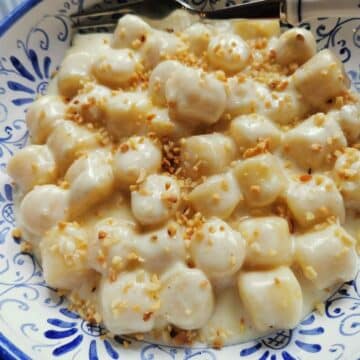[ad_1]
This gnocchi with Castelmagno cheese is a fantastic traditional dish from the Cuneo province of Piemonte (Piedmont) in Northern Italy. It’s also a super simple recipe, the star of which is, of course, the cheese!
Castelmagno is one of Italy’s oldest, rarest and most expensive cheeses. It actually dates back to the 11th-12th century and the days of the emperor Charlemagne. Of course, you can use other types of cheese instead.
Gnocchi al Castelmagno.
On a recent trip to the beautiful Langhe area in Piemonte (Piedmont), I was not only able to taste this iconic gnocchi al Castelmagno where it originates, but also buy some of this ancient cheese, often referred to as the king of alpine cheeses!
We went to the Langhe to visit The Alba White Truffle Fair. Of course, the main attraction of this fair is truffles, particularly white ones. Alba is one of the most famous towns in the area and the fair attracts thousands of visitors every year.
However, apart from both black and white truffles, there were stalls selling other local produce, including wines, pasta and cheeses.
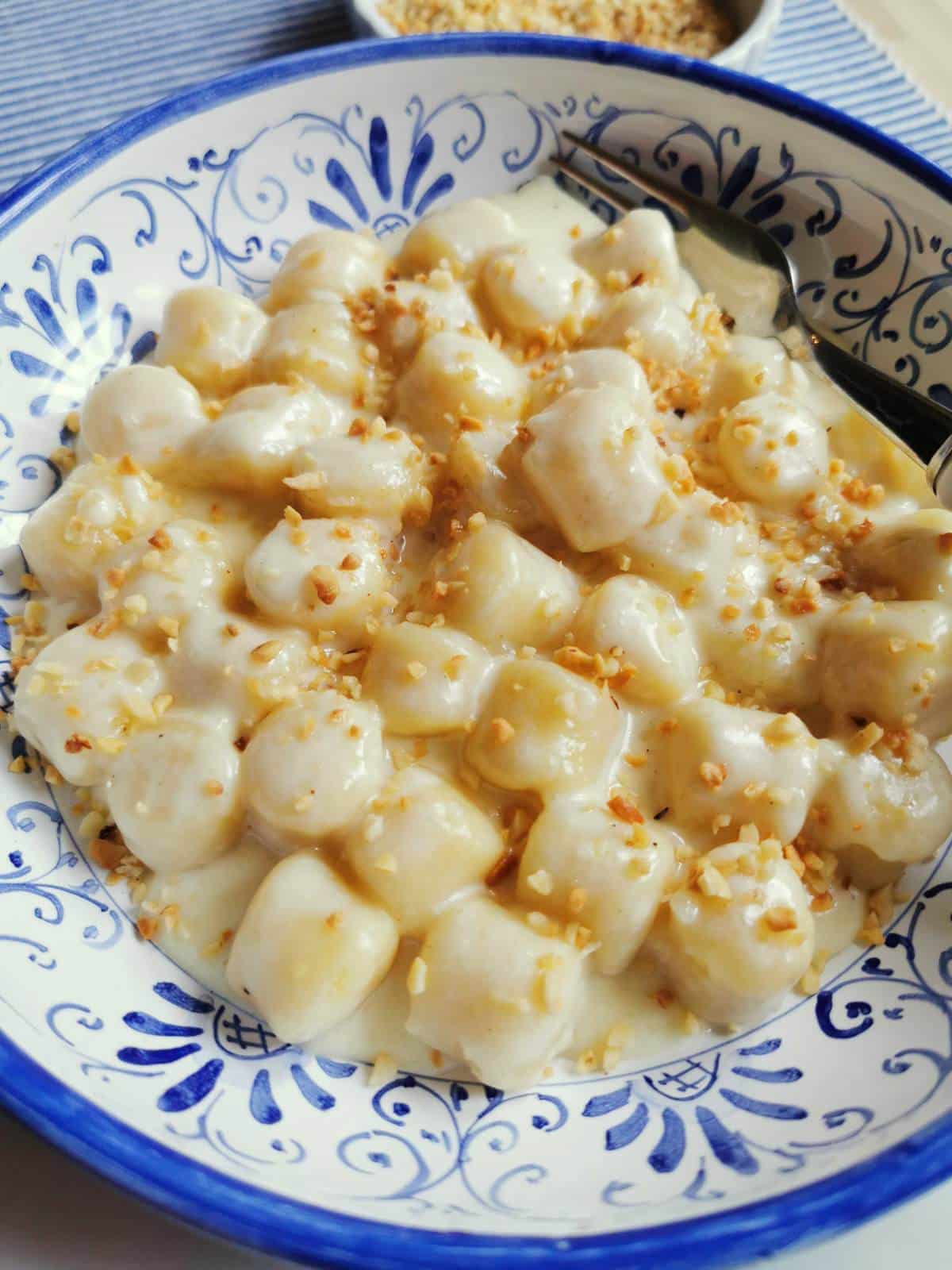

You can find gnocchi with Castelmagno cheese in many of the typical restaurants in Alba and the surrounding towns and villages. It really is a signature dish of Cuneo province. If you are ever in this part of Italy, you should definitely order this amazing gnocchi if you find it on a menu.
What is Castelmagno cheese?
Castelmagno is made from raw cow’s milk, sometimes with the addition (15-20%) of goat or sheep’s milk. It is produced locally in only three villages of the upper Grana Valley in Piemonte: Castelmagno, Pradleves and Monterosso. This is a semi-hard, semi- fat, blue cheese with a dry, granular and crumbly paste.
Italians classify castelmagno as a ‘erborinato’ cheese, meaning it has blue veins. But actually, that is not always the case! Although the milk is inoculated with the penicillium spores that produce blue veins in other cheeses, the veins may or may not develop in Castelmagno.
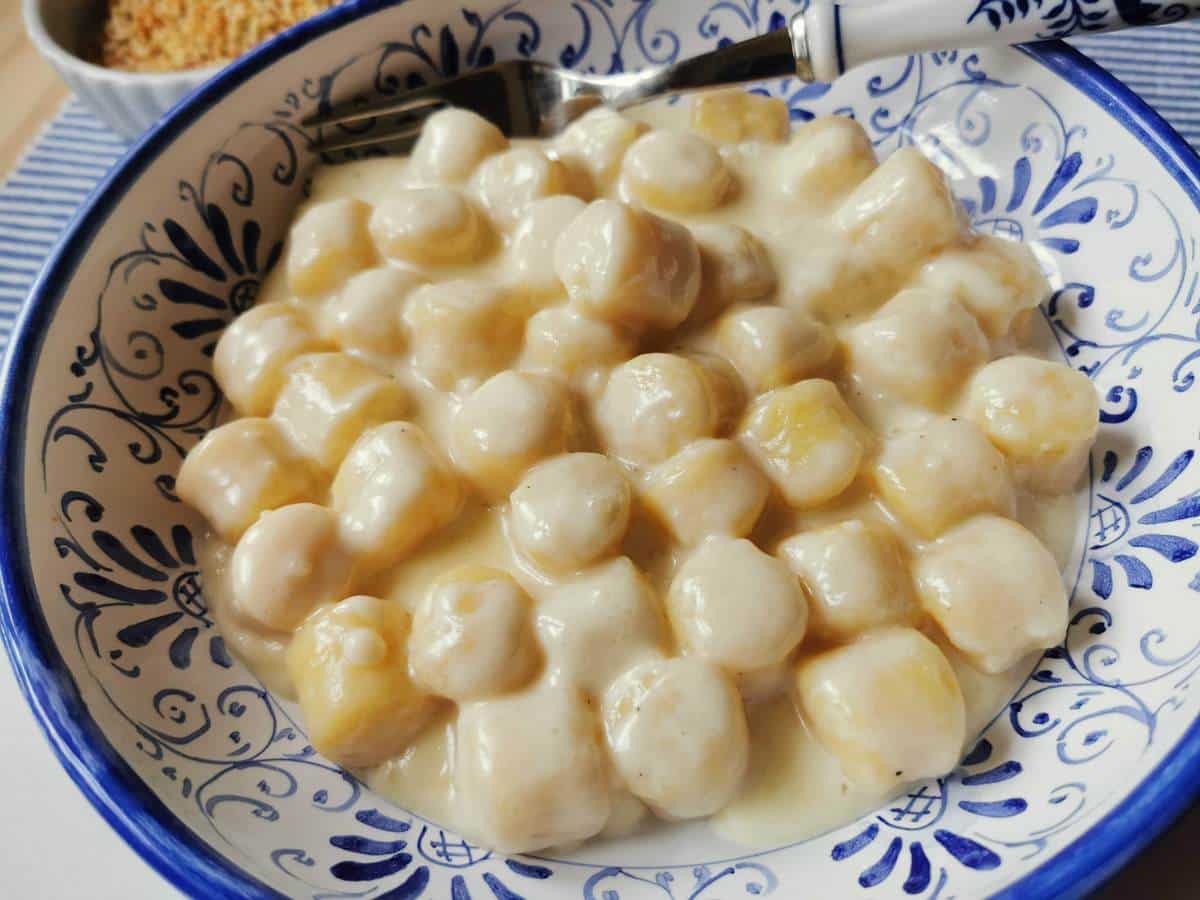

Castelmagno is a really ancient cheese. The first document in which it is explicitly mentioned is an arbitration ruling from 1277, which stated that the municipality of Castelmagno had to pay an annual fee in return for grazing rights to the Marquis of Saluzzo, in wheels of Castelmagno cheese instead of money!
The only milk they use to make this cheese comes from Piemontese cattle, fed on fresh forage or hay from mixed meadows or pastures. In fact, Castelmagno has a unique flavour that derives from a particular kind of grass called ‘evax’, that is native to the pastures of Cuneo!
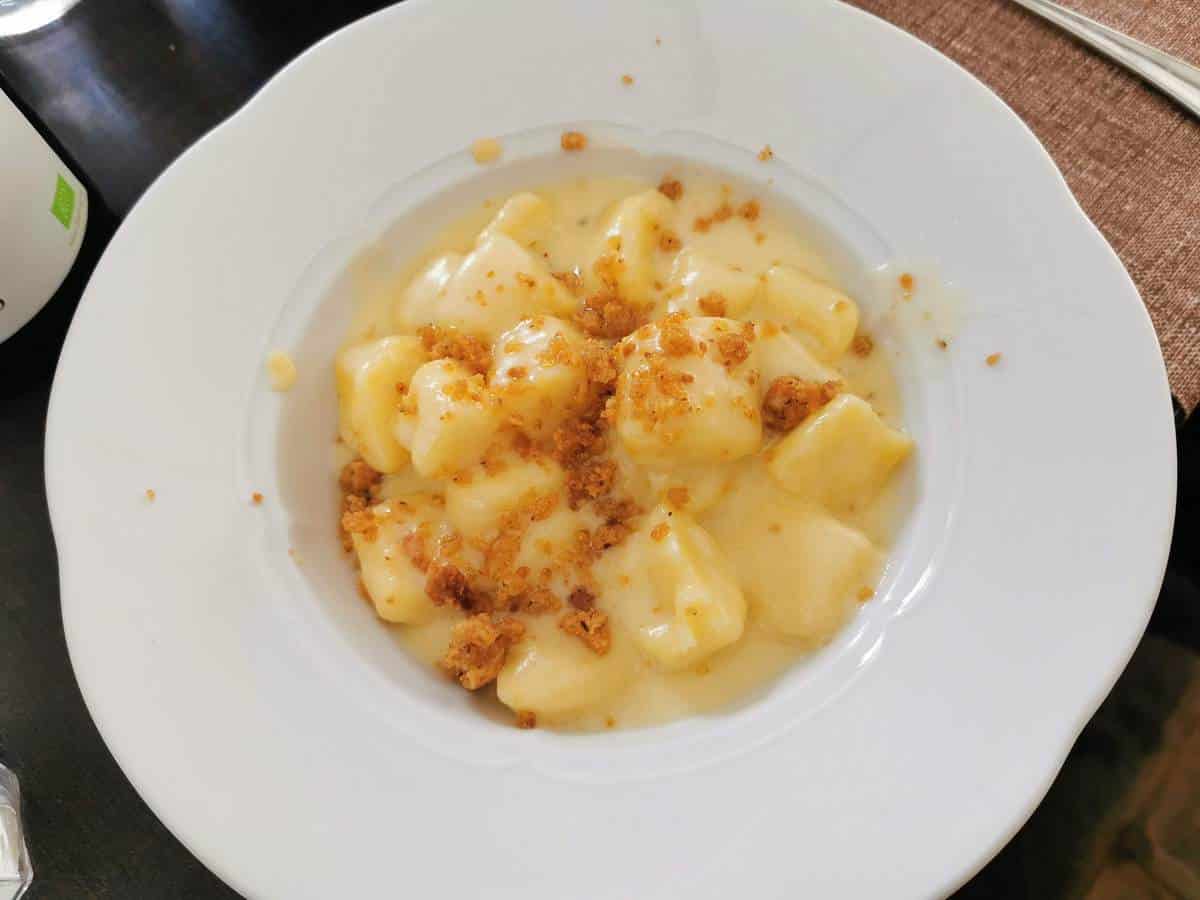

Castelmagno DOP is aged for up to six months in natural mountain grottos or caves. Overall, its flavor is quite savory with a mouth-watering, gentle saltiness. It has a ‘blue’ cheese taste but milder than other blue cheeses.
Only 6 to 7 thousand wheels are produced each year. Probably, less than 200 of those are exported to the USA, making it unfortunately expensive outside of Italy. But, in my opinion, worth treating yourself to if you can find it.
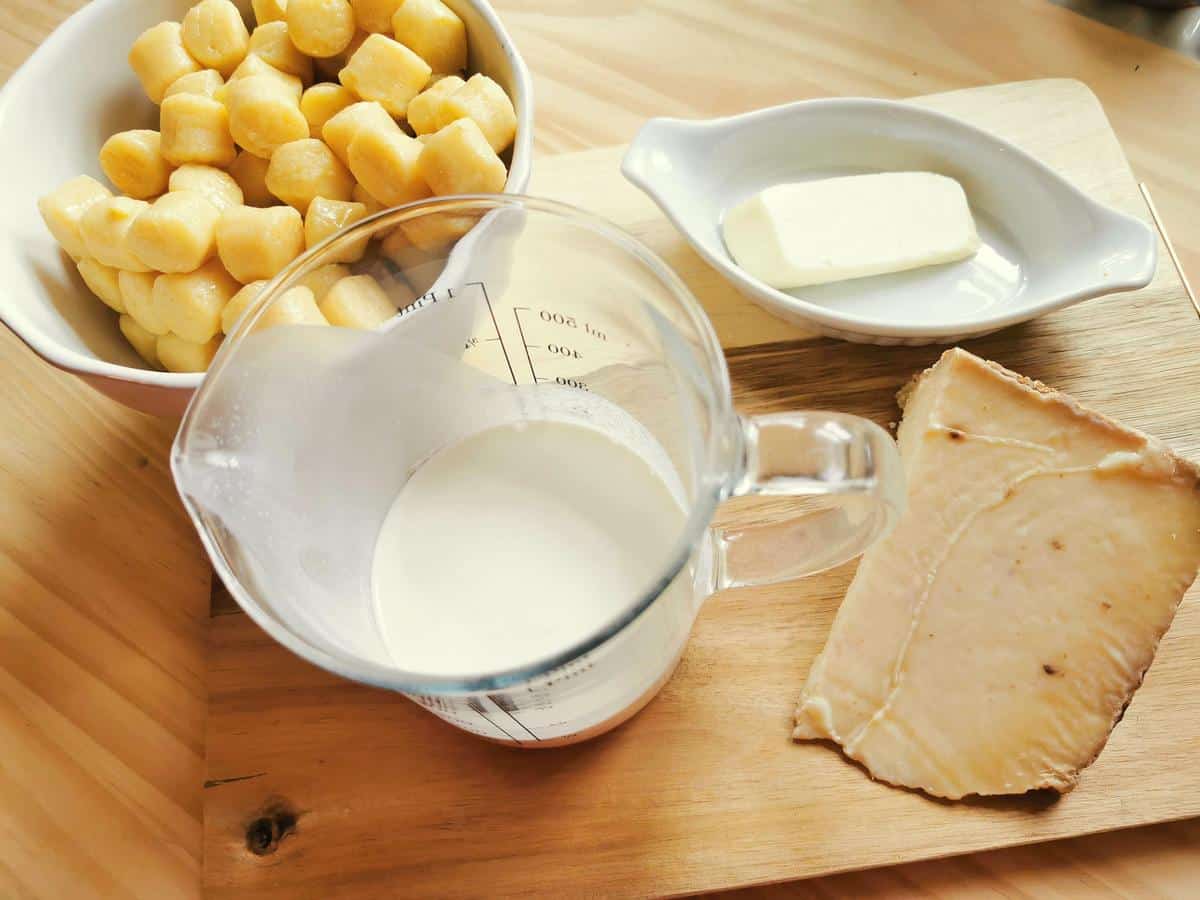

Ingredients in this gnocchi with Castelmagno cheese.
The cheese.
Obviously, this recipe should be made with Castelmagno. But, it is easily adapted for other good melting cheeses. You can use gorgonzola, Stilton, or a firm non-blue cheese like Asiago or Fontina.
The gnocchi.
I used ready made fresh small potato gnocchi which Italians call ‘chicche’. You can either make the gnocchi yourself or buy ready-made. The size isn’t so important. I went for smaller gnocchi because that’s what the restaurant I had this dish in used.
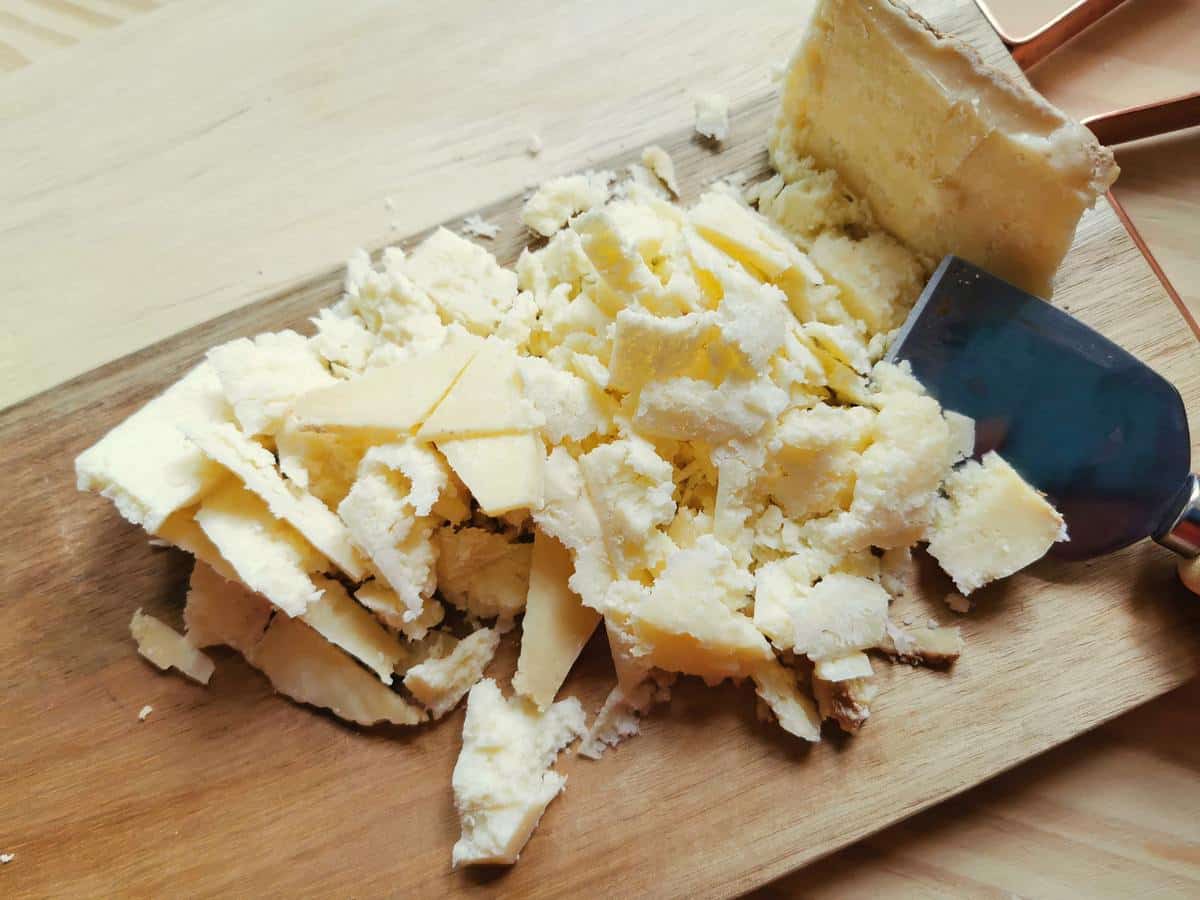

Other ingredients.
Apart from the cheese and gnocchi, this recipe has just two other main ingredients, fresh cream and unsalted butter. If you prefer to use salted butter, it’s best to reduce the salt in the gnocchi water or test taste before adding salt to the finished sauce. Castelmagno is also quite salty so best to avoiding adding too much.
Toppings.
I sprinkled the ready gnocchi al Castelmagno with toasted hazelnut granules, as is popular in Piemonte too. Alba is also home to Ferrero Rocher, the makers of Nutella, and there are hazelnut orchards everywhere!
However, some recipes call for walnut granules or just freshly grated nutmeg instead. You can also serve your gnocchi with some grated Parmigiano.
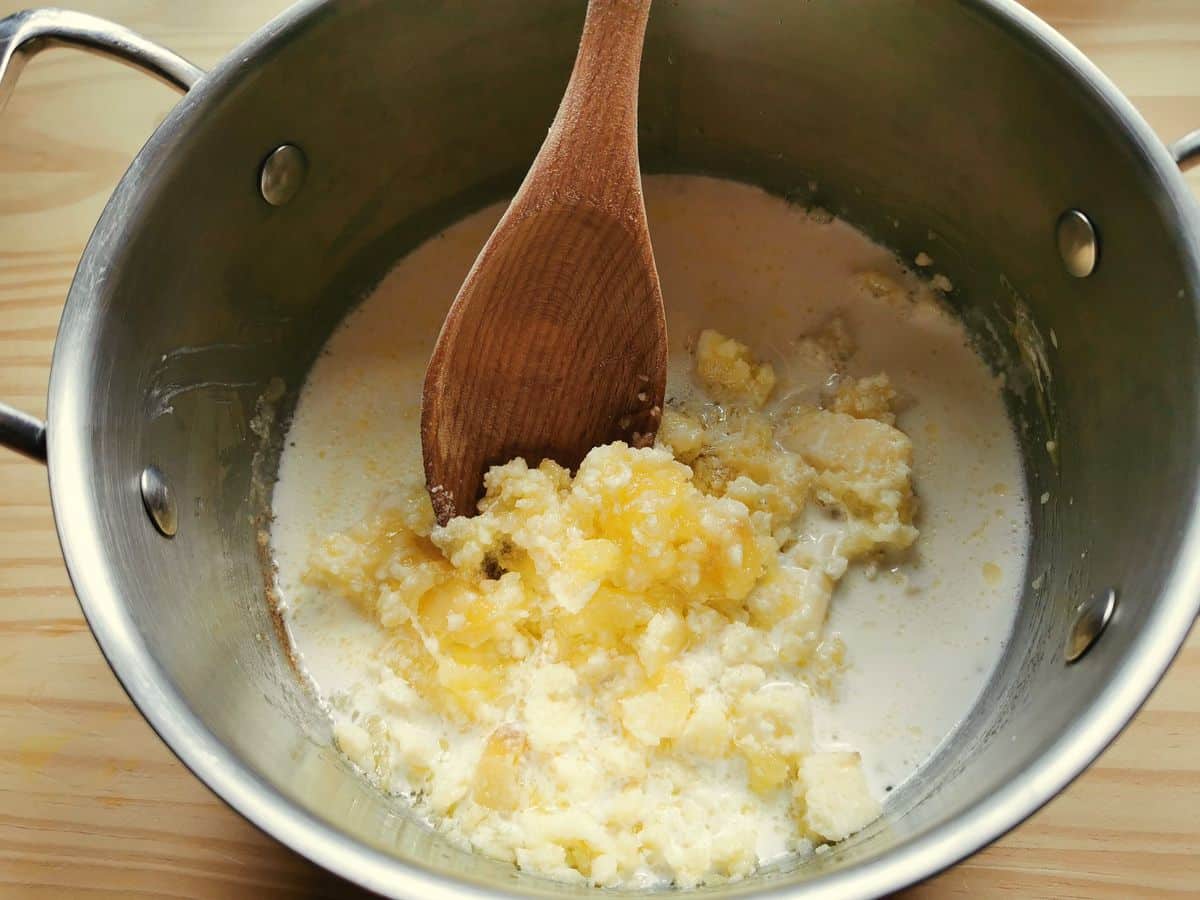

Make your own toasted hazelnut granules.
I used ready toasted hazelnuts granules. But, you can make your own by toasting shelled hazelnuts in the oven (if they aren’t already toasted), rubbing off the skin and then grinding them in a granulator or food processor.
With the latter you will need to use short pulses to prevent the nuts turning into powder. Alternatively, just pound or smash the toasted nuts wrapped in a tea towel with a meat ponder or heavy pan.
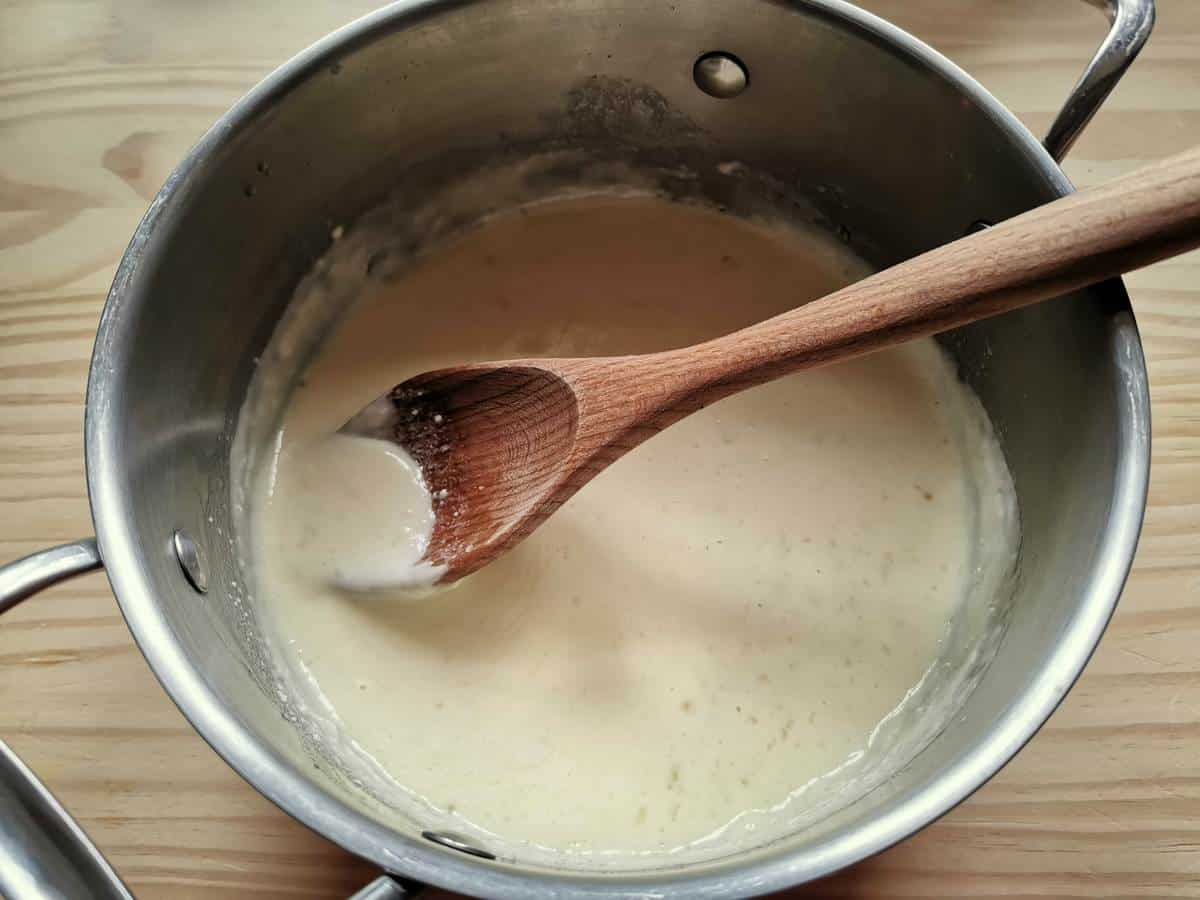

Ingredient variations.
Most recipes for this Piemontese gnocchi dish call for cream. Usually, it’s normal fresh cream or heavy cream. However, there are recipes which use milk plus a little flour or cornstarch instead of cream or just milk on its own.
Step by step instructions.
1. Prepare the cheese by cutting or crumbling it into small pieces. Castelmagno is very crumbly, so grating doesn’t really work. If you are using another cheese, either grate it or cut into small pieces.
2. Put a pot of water on to boil for the gnocchi. Add salt once it starts to boil and bring to the boil again.
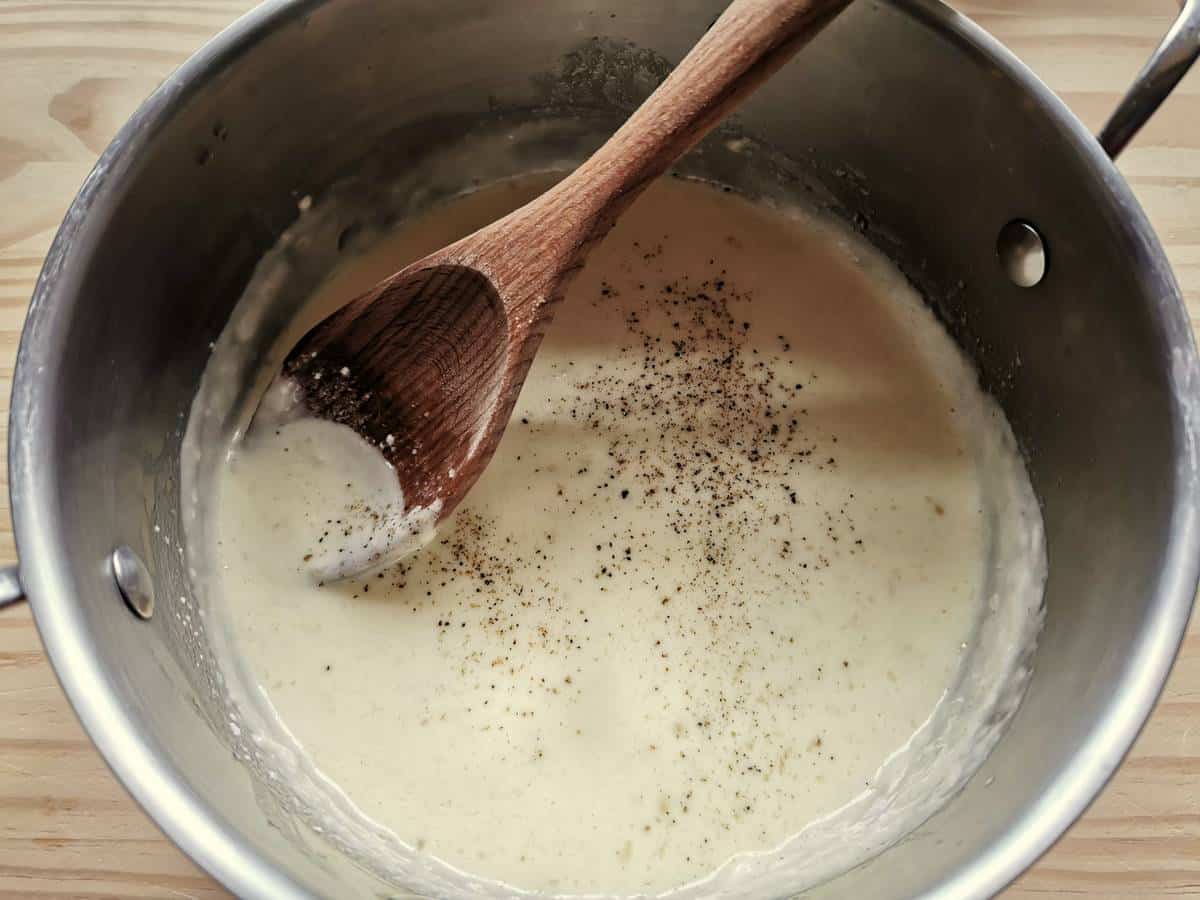

3. In the meantime, melt the butter in a heavy saucepan that’s big enough to hold the cooked gnocchi too. Once the butter has melted add the cream and then the Castelmagno cheese.
4. Continue to stir over a low heat until the cheese has melted completely. Then add salt and pepper to taste.
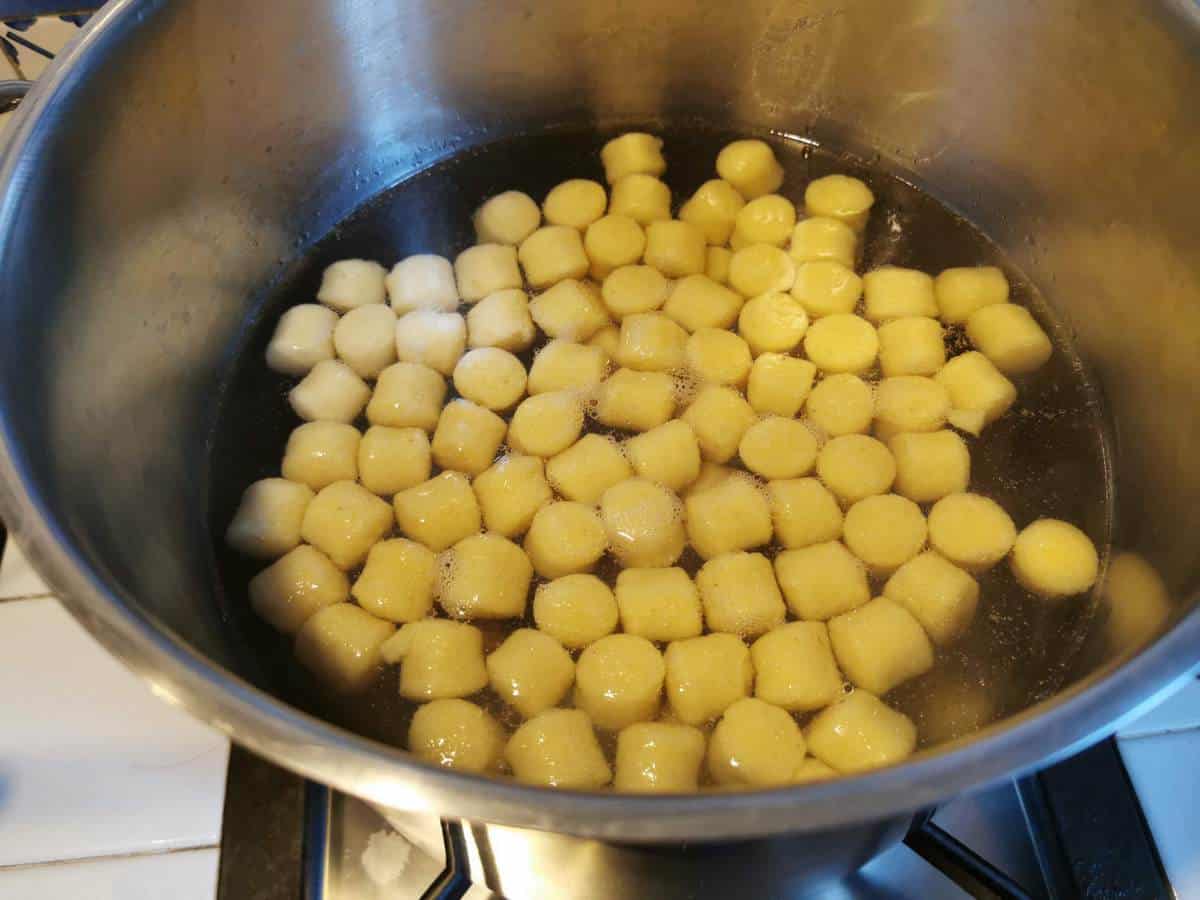

5. Cook the gnocchi in the boiling salted water. Remove with a slotted spoon, once they rise to the surface. Fresh gnocchi don’t need much cooking.
6. Add the gnocchi to the Castelmagno sauce while the latter is still hot, and mix everything together gently to avoid breaking the gnocchi.
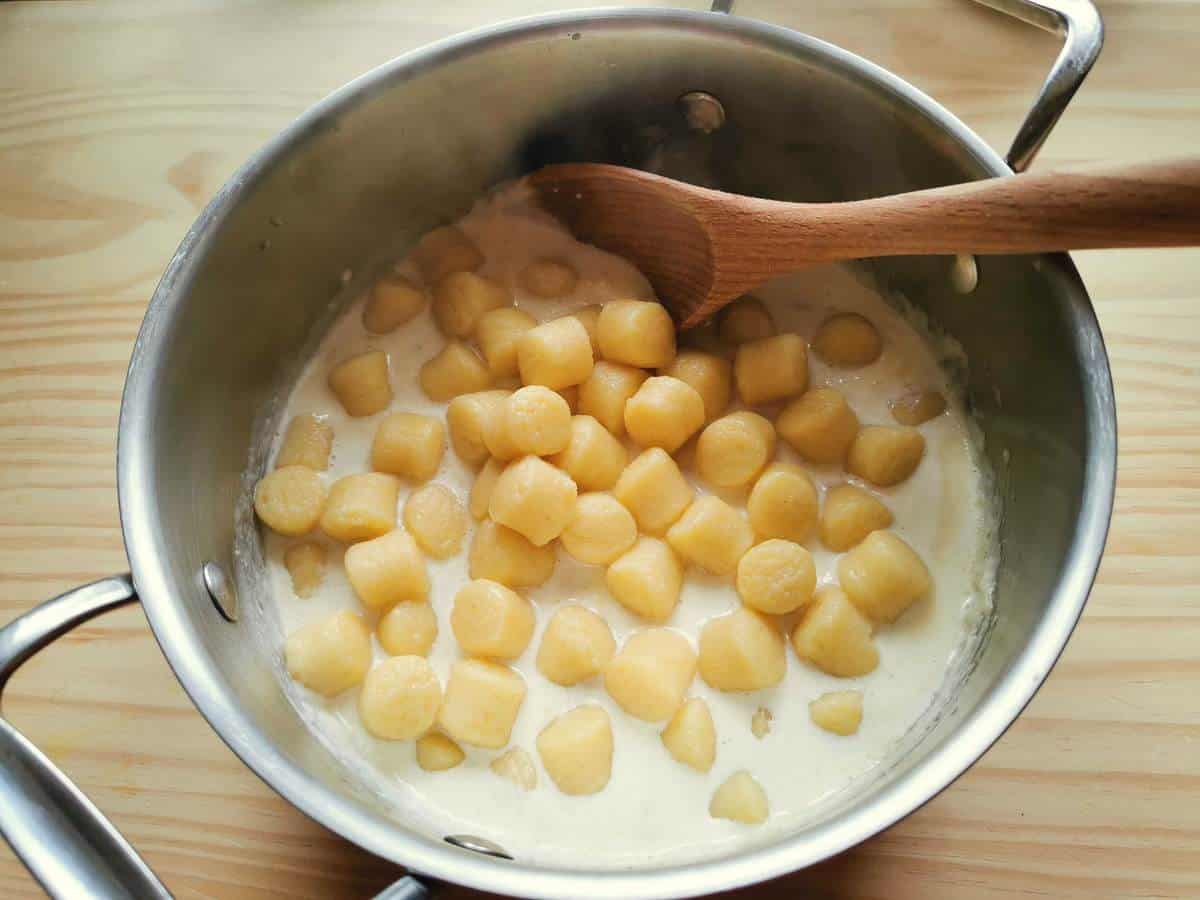

7. Serve immediately with a sprinkling of hazelnut or walnut granules or grated nutmeg.
Is gnocchi with Castelmagno cheese vegetarian?
Like many other traditional Italian cheeses, Castelmagno contains animal rennet. So, it’s not vegetarian. To make a vegetarian version of this recipe, you will need to use a cheese made with a vegetarian rennet. Some examples of blue cheese that you can use are most Stilton and dolcelatte.
Some cheese makers in UK and USA make their own vegetarian blue cheese, even gorgonzola. But it’s best to check the label. Italian Parmigiano Reggiano is also not vegetarian.
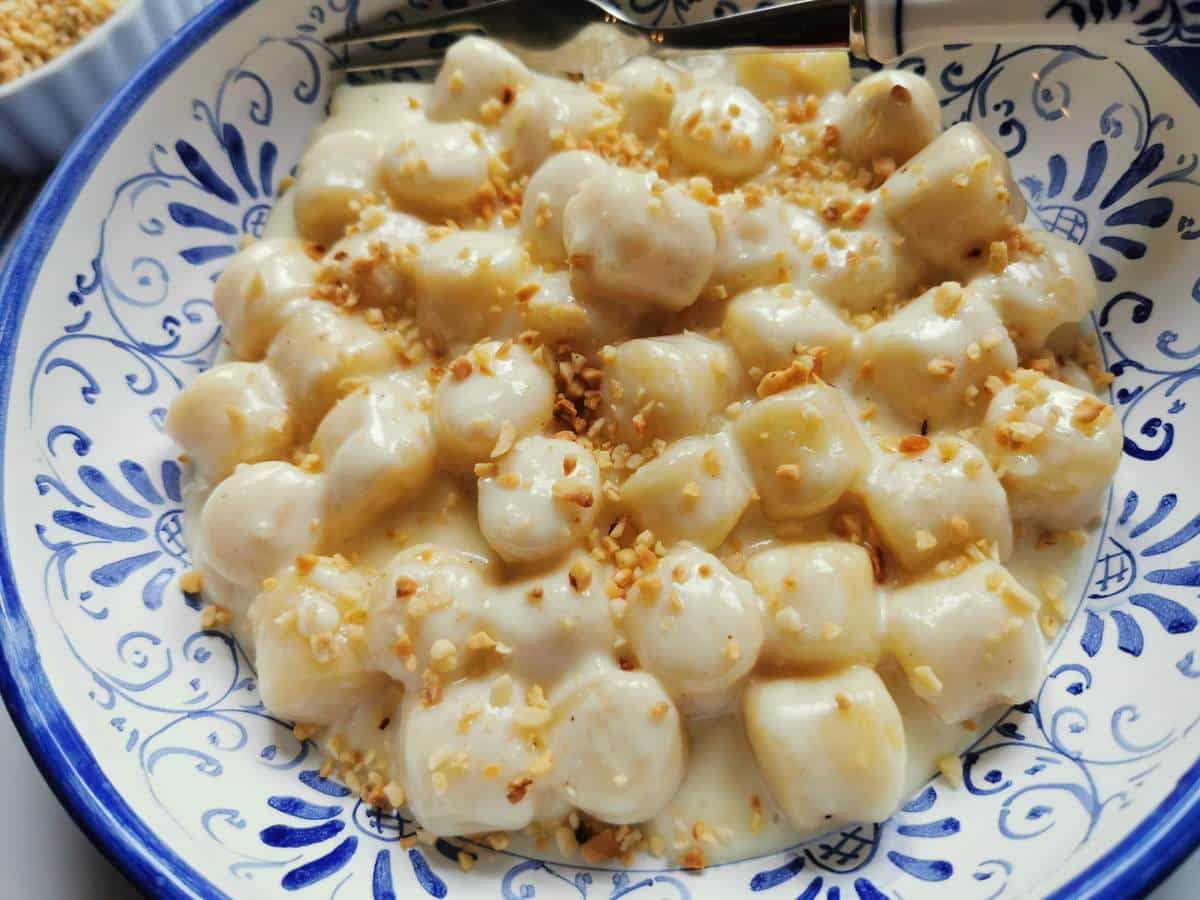

What to do with leftovers.
I would not recommend freezing leftovers of this dish. Cooked cheese doesn’t freeze well and the gnocchi may become mushy.
However, you can keep leftovers in the fridge for up to 3 days in a sealed container. When you want to eat the leftovers, transfer them to a pan, add a little milk, gently mix it into the gnocchi and cheese sauce. The sauce will have solidified but it will melt again. Cook slowly over a low heat until hot through.
Where can you buy Castelmagno cheese.
Here in Italy, Castelmagno DOP is available at some cheese shops or gourmet food shops. It’s also available online from producers and even Eataly Italia. Outside of Italy, it can also be found in some Italian specialty food shops. I found it online in this shop in the UK and in this one in the USA .
The above links are not affliate links. I was just searching for places to buy Castelmagno abroad. Whether you get your hands on some real Castelmagno DOP or make this recipe with an alternative cheese, I’m sure you will love how easy and flavorful this dish is!
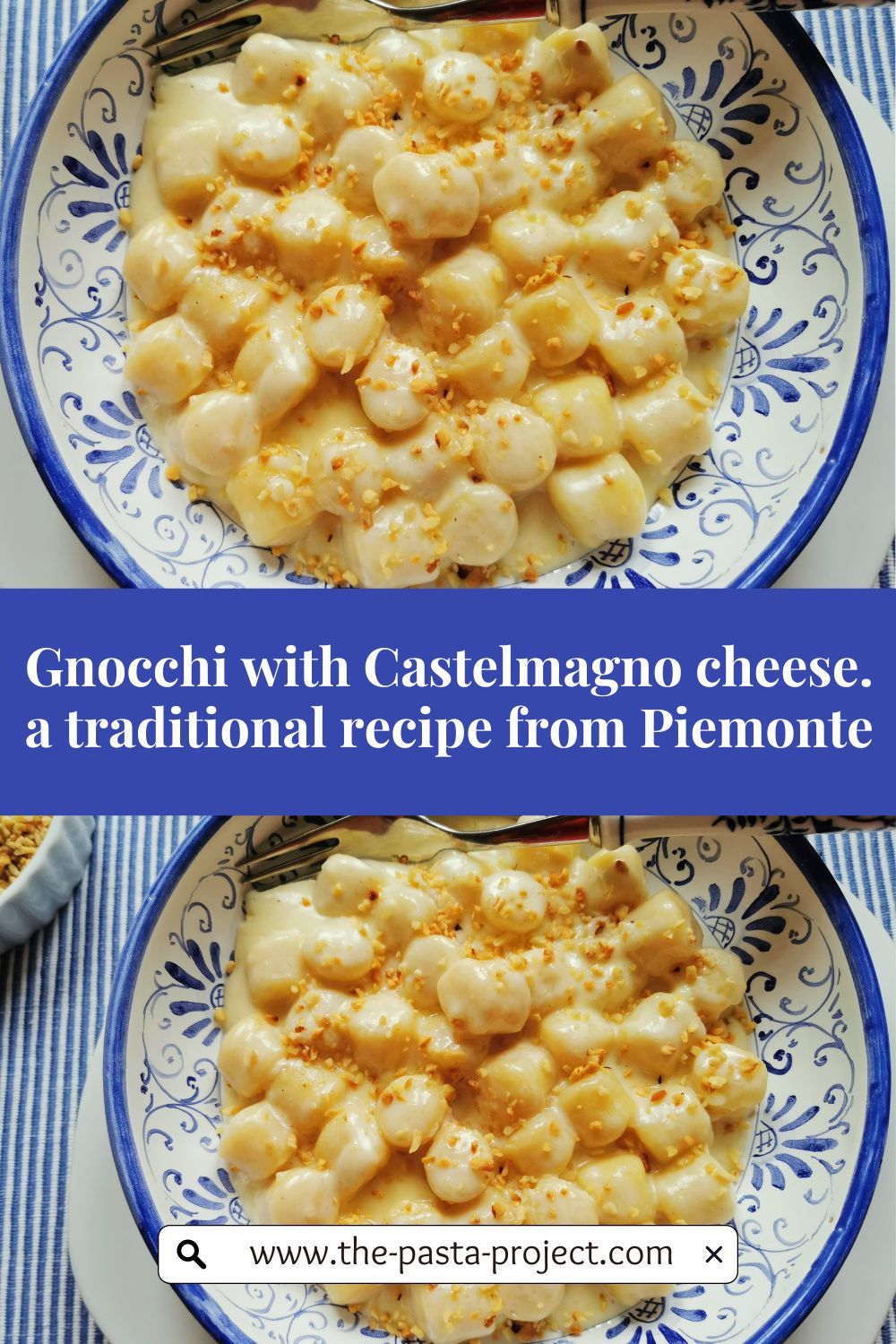

Let me know what you think.
If you make this gnocchi with Castelmagno cheese recipe, I’d love to hear how it turns out and if you liked it. So, please leave a comment here on the blog or on The Pasta Project Facebook page.
Looking forward to hearing from you!
Buon appetito!
Other cheesy pasta and gnocchi recipes to try.
21 Italian Cheesy Pasta Recipes
The best cheese and potato gnocchi
If you are interested in learning how to make different types of homemade pasta and different types of gnocchi, check out my shop page for some great video online courses from my friends in Rome! Nothing beats learning to make pasta from Italians!
Plus while you’re there why not order a copy of one of my pasta recipe cookbooks or checkout some recommended pasta making tools? All great prezzies for pasta lovers!
Reader Interactions
[ad_2]


